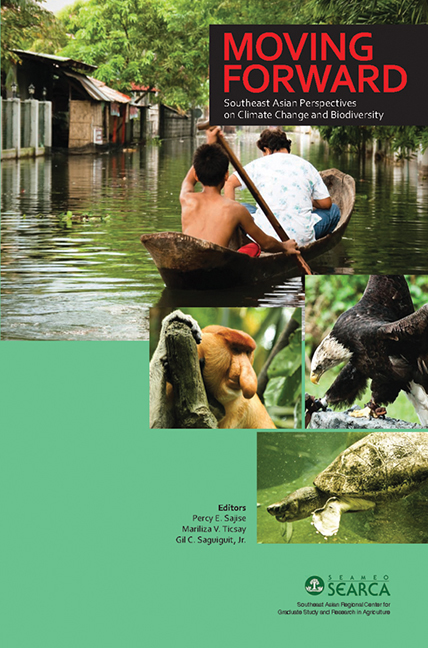135 results in Lectures, Workshops, and Proceedings of International Conferences

Gender and Ageing
- Southeast Asian Perspectives
-
- Published by:
- ISEAS–Yusof Ishak Institute
- Published online:
- 21 October 2015
- Print publication:
- 20 August 2014

An APEC Trade Agenda?
- The Political Economy of a Free Trade Area of the Asia-Pacific
-
- Published by:
- ISEAS–Yusof Ishak Institute
- Published online:
- 21 October 2015
- Print publication:
- 02 July 2007

The Uruguay Round
- ASEAN Trade Policy and Options
-
- Published by:
- ISEAS–Yusof Ishak Institute
- Published online:
- 21 October 2015
- Print publication:
- 01 January 1988

Sustainability Science for Watershed Landscapes
-
- Published by:
- ISEAS–Yusof Ishak Institute
- Published online:
- 21 October 2015
- Print publication:
- 18 May 2010

Fisheries Exploitation in the Indian Ocean
- Threats and Opportunities
-
- Published by:
- ISEAS–Yusof Ishak Institute
- Published online:
- 21 October 2015
- Print publication:
- 11 November 2009

Developing Bond Markets in APEC
- Toward Greater Public-Private Sector Regional Partnership
-
- Published by:
- ISEAS–Yusof Ishak Institute
- Published online:
- 21 October 2015
- Print publication:
- 31 August 2005

Advancing Singapore-China Economic Relations
-
- Published by:
- ISEAS–Yusof Ishak Institute
- Published online:
- 21 October 2015
- Print publication:
- 28 January 2014

Greater Mekong Subregion
- From Geographical to Socio-economic Integration
-
- Published by:
- ISEAS–Yusof Ishak Institute
- Published online:
- 21 October 2015
- Print publication:
- 07 February 2013

Labour Mobility in the Asia-Pacific Region
- Dynamics, Issues and a New APEC Agenda
-
- Published by:
- ISEAS–Yusof Ishak Institute
- Published online:
- 21 October 2015
- Print publication:
- 13 November 2008

Myanmar's Transition
- Openings, Obstacles and Opportunities
-
- Published by:
- ISEAS–Yusof Ishak Institute
- Published online:
- 21 October 2015
- Print publication:
- 19 November 2012

Hard Choices
- Security, Democracy, and Regionalism in Southeast Asia
-
- Published by:
- ISEAS–Yusof Ishak Institute
- Published online:
- 21 October 2015
- Print publication:
- 30 December 2008

Moving Forward
- Southeast Asian Perspectives on Climate Change and Biodiversity
-
- Published by:
- ISEAS–Yusof Ishak Institute
- Published online:
- 21 October 2015
- Print publication:
- 10 February 2010

Political and Security Dynamics of South and Southeast Asia
-
- Published by:
- ISEAS–Yusof Ishak Institute
- Published online:
- 21 October 2015
- Print publication:
- 26 October 2007

Managing Economic Crisis in Southeast Asia
-
- Published by:
- ISEAS–Yusof Ishak Institute
- Published online:
- 21 October 2015
- Print publication:
- 27 December 2010

Singapore Energy Conference 2006
- Summary Report
-
- Published by:
- ISEAS–Yusof Ishak Institute
- Published online:
- 21 October 2015
- Print publication:
- 05 December 2006

Deepening Democracy in Indonesia?
- Direct Elections for Local Leaders (Pilkada)
-
- Published by:
- ISEAS–Yusof Ishak Institute
- Published online:
- 21 October 2015
- Print publication:
- 09 February 2009

The Politics of Knowledge
-
- Published by:
- ISEAS–Yusof Ishak Institute
- Published online:
- 21 October 2015
- Print publication:
- 02 March 2009

The INF Treaty and Its Implications for Asia-Pacific Security
-
- Published by:
- ISEAS–Yusof Ishak Institute
- Published online:
- 21 October 2015
- Print publication:
- 01 January 1989

Poverty Reduction through Sustainable Fisheries
- Emerging Policy and Governance Issues in Southeast Asia
-
- Published by:
- ISEAS–Yusof Ishak Institute
- Published online:
- 21 October 2015
- Print publication:
- 17 November 2008

Industrial Restructuring in ASEAN and Japan
- An Overview
-
- Published by:
- ISEAS–Yusof Ishak Institute
- Published online:
- 21 October 2015
- Print publication:
- 01 January 1987

